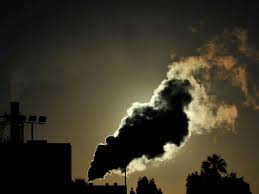Carbon discharges will get to 37 billion tonnes in 2018, a document high
Co2 (CO₂) discharges from nonrenewable fuel sources and market are forecasted to increase greater than 2% (vary 1.8% to 3.7%) in 2018, taking worldwide fossil CO₂ discharges to a brand-new document high of 37.1 billion tonnes.
The solid development is the 2nd successive year of enhancing discharges because the 2014-16 duration when discharges stabilised, additional slowing down development to the objectives of the Paris Contract that need a top in greenhouse gas discharges immediately. Solid development in discharges from the use coal, oil and gas recommends CO₂ discharges are most likely to enhance additional in 2019.
Learn more: What is a pre-industrial environment and why does it issue?
Solid power need lags the increase in discharges development, which is outpacing the rate at which decarbonisation of the power system is occurring. Overall power usage worldwide enhanced by one 6th over the previous years, the outcome of an expanding worldwide center course and the have to offer electrical power to numerous countless individuals residing in hardship. The difficulty, after that, is for all countries to decarbonise their economic climates while likewise rewarding the require for power, especially in establishing nations where proceeded development in power provide is required.
These analyses belong to the brand-new yearly evaluation of the Worldwide Carbon Job (GCP), released today in 3 different documents. The GCP brings with each other researchers that utilize environment and commercial information from worldwide to establish one of the most extensive photo of the Earth's resources and sinks of greenhouse gases. Keunggulan Ayam Pakhoy

A shock in 2018 (and 2017) was the go back to development in CO₂ discharges from coal utilize after an obvious top in 2013, although coal discharges in 2017 were still 3% listed below the 2013 document high. This alter was one main factor for the greater enhance in discharges development in 2018, in addition to long-lasting development in oil and gas discharges. The biggest nationwide payments to the development in coal discharges originated from China and India, while the solitary biggest decrease in coal discharges remained in the Unified Specifies, where greater than 250 coal-fired nuclear power plant have shut because 2010 and much a lot extra are anticipated to shut down over the following 5 years.
The development of discharges from concrete manufacturing has slowed down considerably.
Many nations are adding to the enhance in worldwide fossil CO₂ discharges. Nevertheless, 19 nations standing for 20% of the worldwide discharges, revealed decreasing patterns in discharges in the previous years (2008-17) while their economic climates remained to expand. These nations are: Aruba, Barbados, Czech Republic, Denmark, France, Greenland, Iceland, Ireland, Malta, the Netherlands, Romania, Slovakia, Slovenia, Sweden, Switzerland, Trinidad and Tobago, the UK, the US, and Uzbekistan.
